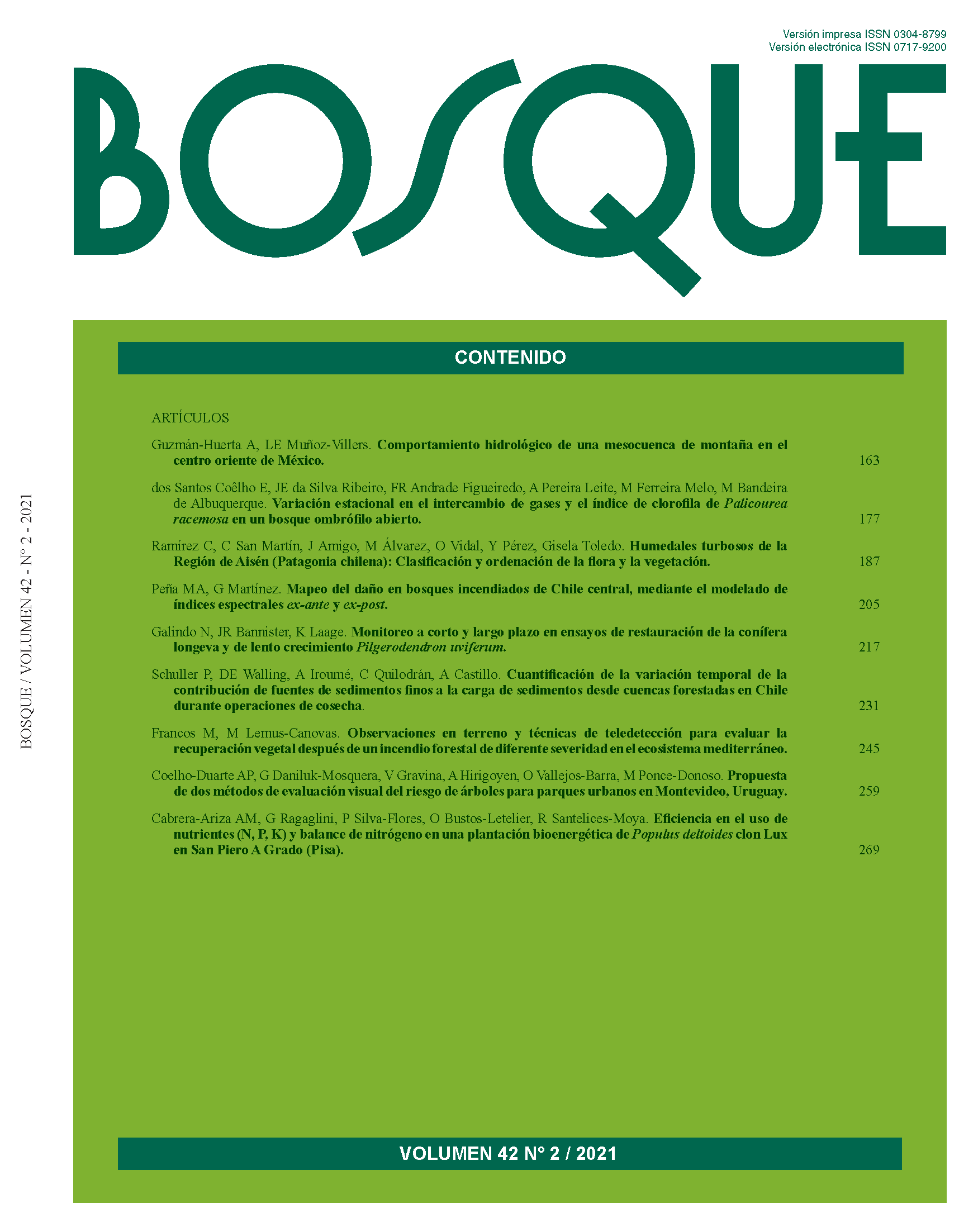Observaciones en terreno y técnicas de teledetección para evaluar la recuperación vegetal después de un incendio forestal de diferente severidad en el ecosistema mediterráneo
Contenido principal del artículo
Resumen
Muchos estudios de los ecosistemas mediterráneos han analizado la recuperación de la vegetación después de un incendio forestal, basándose en el trabajo de campo o en la teledetección; sin embargo, solo unos pocos han adoptado una evaluación con ambos enfoques. El objetivo de este estudio es determinar la viabilidad de un enfoque múltiple que utilice el trabajo en terreno y la teledetección para observar el tiempo de recuperación de la vegetación en zonas con diferente severidad tras un incendio forestal. La zona de estudio está situada en un bosque Mediterráneo del noreste de España. Después de un incendio forestal, se delimitaron e inventariaron las severidades bajas, medias y altas con un control sin quemar a corto, medio y largo plazo, utilizando un transecto de 20 m tomando las medidas en un ancho de 1 m. En cada zona se midió la riqueza (S), la diversidad (H') y la densidad (D) vegetal mediante trabajo de campo. Se calculó y cuantificó la diferencia entre el índice normalizado de quemado (dNBR) y la precisión de la disminución media (%incMSE). Ambos métodos resultan ser muy exhaustivos en el estudio de la densidad vegetal. El índice dNBR disminuye con el tiempo como efecto de la desaparición de la perturbación por incendio. Las variables topográficas y de vegetación ayudan a explicar la severidad del fuego a muy corto y corto plazo, mientras que a medio y largo plazo prácticamente se pierde toda capacidad explicativa. La dependencia parcial permitió identificar aquellas áreas que sufrieron una mayor severidad del fuego y la evolución vegetal a lo largo del tiempo.

